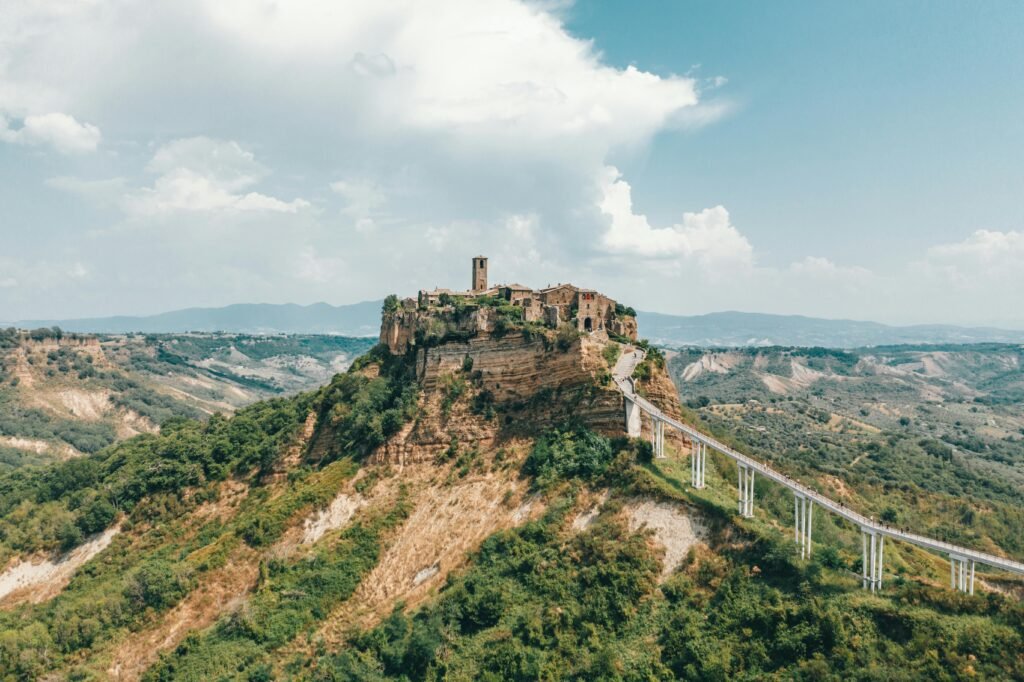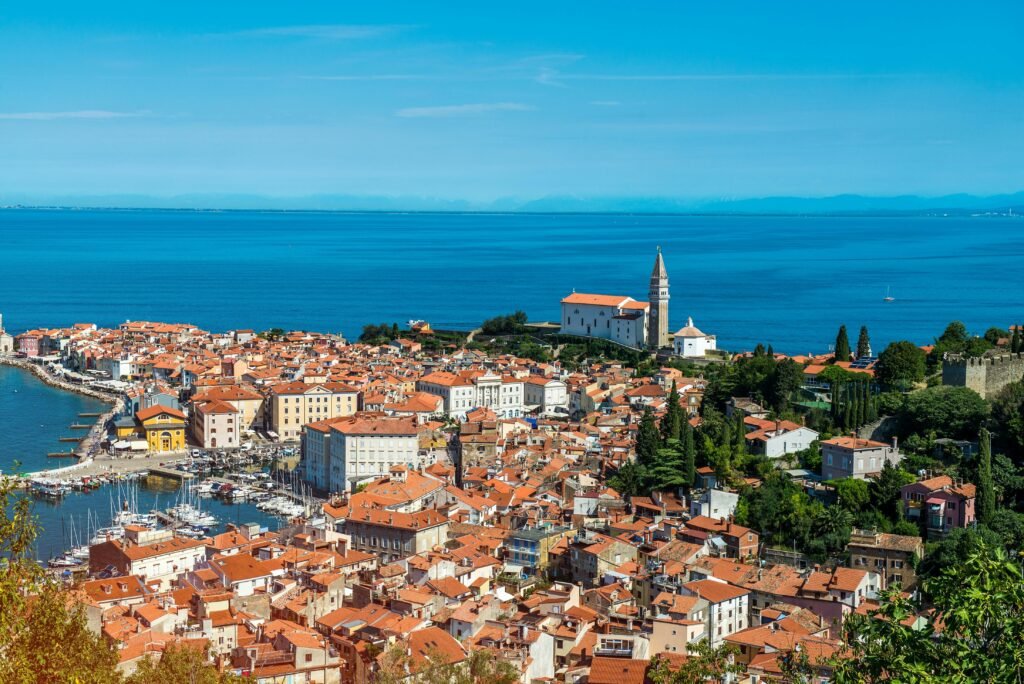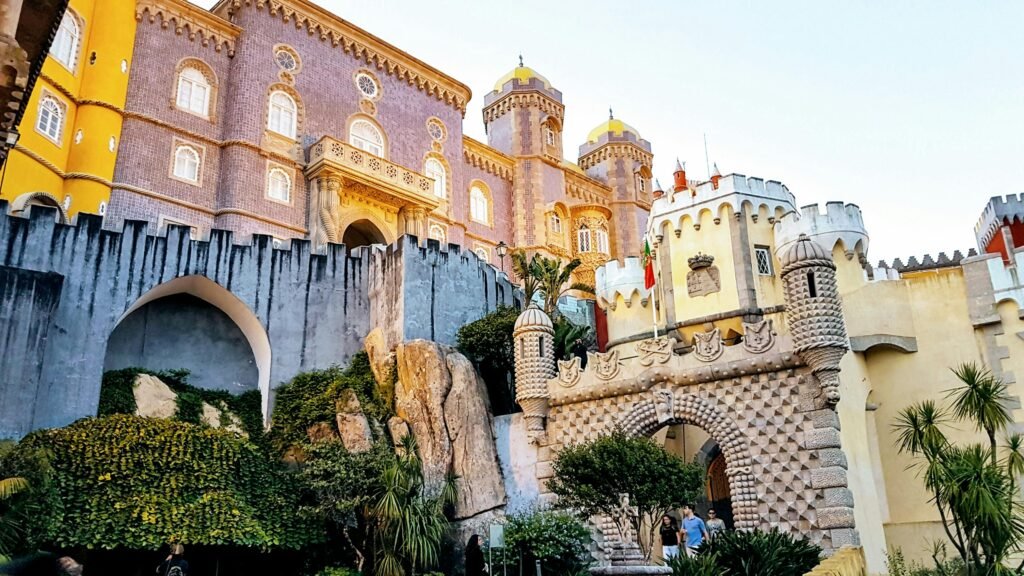Introduction to Hidden Gems in Europe
When traveling in Europe, the allure of well-known destinations often overshadows lesser-known locales, which can offer unique experiences and rich cultural significance. Hidden gems in Europe refer to those enchanting places that remain largely off the beaten path, providing travelers with authentic insights into local life, history, and traditions. These destinations might not boast the grandeur of iconic landmarks like the Eiffel Tower or the Colosseum, yet their charm lies in their authenticity and uniqueness.

Exploring hidden gems allows travelers to escape the usual tourist traps and immerse themselves in a world that is often overlooked. These locations often boast breathtaking landscapes, stunning architecture, and vibrant local cultures that are just waiting to be discovered. Visitors can find themselves wandering through quaint villages, engaging with friendly locals, or savoring regional delicacies, giving them a profoundly enriching travel experience that cannot be replicated in more popular settings.
Moreover, hidden gems often showcase Europe’s diverse heritage, from ancient traditions to contemporary artistic expressions. They allow for deeper cultural appreciation and give grateful travelers the chance to explore a side of Europe that most tourists miss. The quieter atmosphere found in these areas fosters genuine interactions and may result in lasting memories that overshadow those created in bustling tourist centers.
Ultimately, the exploration of hidden gems in Europe offers a refreshing alternative to conventional tourism. By venturing off the beaten path, travelers can forge personal connections with destinations while supporting local economies and communities. Undoubtedly, the journey to uncover these treasures adds a unique dimension to the travel experience, making each trip memorable and meaningful.
Gjirokastër, Albania
Gjirokastër, a UNESCO World Heritage site nestled in the heart of Albania, boasts a rich tapestry of Ottoman architecture and colorful history. Often referred to as the “City of Stone,” this charming town is characterized by its distinctive stone houses that cascade down the hillside, creating a captivating sight. The town’s most prominent feature is the Gjirokastër Castle, a formidable fortress that overlooks the valley and offers breathtaking panoramic views of the surrounding landscape. Initially built in the 12th century, the castle has served various purposes throughout its storied history, including a military stronghold and a museum dedicated to the town’s heritage.
Visitors can explore the Ethnographic Museum situated within the castle, which showcases traditional Albanian life and culture. Housed in what was once the home of the renowned Albanian dictator Enver Hoxha, the museum contains a variety of exhibits that reflect the local customs, crafts, and attire. This insight offers tourists a deeper understanding of the region’s vibrant culture and the influences that have shaped its evolution over the centuries.

Moreover, Gjirokastër’s culinary scene is an attraction in itself. The local cuisine is a delightful fusion of Mediterranean and Balkan flavors, making it a must-try for any visitor. Traditional dishes such as pasha qiqrra (a chickpea stew) and byrek (savory pastry) exemplify the area’s rich gastronomic heritage. Dining in local taverns, where ingredients are often sourced from nearby farms, allows visitors to immerse themselves in an authentic culinary experience. The blend of flavors, the stunning architecture, and the welcoming atmosphere contribute to the charm of Gjirokastër, making it a hidden gem that enchants all who visit.
Visby, Sweden
Nestled on the island of Gotland in Sweden, Visby stands out as a unique destination steeped in medieval history. This UNESCO World Heritage Site boasts well-preserved ruins, charming cobblestone streets, and a breathtakingly picturesque harbor that beckons visitors to step back in time. Walking through Visby feels like exploring the pages of a history book, where ancient stone walls and remnants of fortifications create an enchanting atmosphere that draws travelers from near and far.
One of the most significant events that contribute to the allure of Visby is the annual Medieval Week, held every August. During this vibrant celebration, the town transforms into a living history exhibit, as both residents and visitors don period costumes and participate in various activities inspired by the Middle Ages. The streets fill with knights, jesters, and artisans showcasing their crafts, while medieval markets offer an array of unique handmade goods. The lively events often include jousting tournaments and theatrical performances, providing visitors with an immersive experience that highlights the town’s rich heritage.
Aside from its historical charm, Visby is also home to a variety of local shops that offer unique products ranging from artisanal crafts to handmade delicacies. Strolling through the quaint streets, visitors can discover boutiques featuring local artisans’ work, ensuring a distinctive shopping experience that you won’t find elsewhere. Moreover, the idyllic beaches surrounding the town invite leisurely strolls or sunbathing, making it an excellent destination for those looking to relax after exploring the significant historical landmarks. With its combination of medieval charm and modern conveniences, Visby is truly a hidden gem worth exploring in Europe.
Kotor, Montenegro
Nestled between the rugged peaks of the steep mountains and the shimmering waters of the Adriatic Sea, Kotor, Montenegro, presents an enchanting retelling of history in an exquisitely picturesque setting. This medieval town is located within the Bay of Kotor, a grand natural fjord that is widely regarded as one of the most beautiful bays in Europe. The serene beauty of the landscape is matched only by the intriguing charm of the old town, known for its well-preserved medieval architecture and vibrant atmosphere.
The old town of Kotor is a UNESCO World Heritage site, where narrow cobblestone streets wind between ancient stone buildings. Visitors will find a harmonious blend of history and culture, with landmarks such as the Cathedral of Saint Tryphon and the devotedly restored city walls that protect this gem from the outside world. The blend of Venetian and Slavic influences creates a captivating experience as one strolls through its quaint squares and alleyways.

Outdoor enthusiasts will be delighted by the variety of activities available in this striking location. Hiking is particularly popular, with trails leading up to the San Giovanni Fortress, which sits high above the town. The hike is rewarding, offering breathtaking panoramic views of the bay and the surrounding mountains. Additionally, the pristine waters of the bay invite visitors to partake in kayaking, sailing, or leisurely boat tours that allow an intimate exploration of the scenic coastline.
Kotor serves as a reminder of the enduring beauty of Europe’s hidden gems. With its captivating landscapes, rich cultural heritage, and abundant opportunities for adventure, this Montenegrin destination promises an unforgettable experience for any traveler seeking to unveil the lesser-known treasures of Europe.
Civita di Bagnoregio, Italy
Civita di Bagnoregio, often referred to as the “dying town,” is a captivating hilltop village situated in the Lazio region of Italy. Perched dramatically atop a cliff, this enchanting settlement offers breathtaking views of the surrounding valleys and hills. The village’s unique geography, characterized by its erosion-prone cliffs, has shaped its rich history and continual efforts for preservation. Unlike many other well-known Italian destinations, Civita di Bagnoregio remains relatively untouched by mass tourism, making it a hidden gem for those who seek an authentic Italian experience.
Founded by the Etruscans over two thousand years ago, Civita di Bagnoregio boasts a fascinating historical narrative, profoundly reflected in its stunning medieval architecture. Visitors can explore the village’s narrow cobblestone streets, lined with charming stone buildings, small art galleries, and local shops. An iconic feature of the village is the impressive bridge that connects it to the nearby town of Bagnoregio, which serves as the primary access point for visitors. This picturesque bridge emphasizes the village’s isolation yet highlights its remarkable beauty, making it an ideal destination for artists and photographers alike.

Preservation efforts have been crucial in maintaining the village’s integrity amidst the challenges posed by natural erosion and demographic decline. Initiatives led by local authorities aim to revitalize the community and promote sustainable tourism practices while ensuring that Civita di Bagnoregio’s historical significance is respected. The village’s charm lies not only in its scenic vistas but also in its ability to transport visitors back in time, allowing them to experience the essence of Italian heritage. A visit to Civita di Bagnoregio is indeed a venture into history, making it a must-see for those exploring the lesser-known treasures of Italy.
Piran, Slovenia
Piran, a picturesque coastal town nestled along Slovenia’s Adriatic coast, is often considered a hidden gem among travelers seeking charm and culture. This enchanting town is renowned for its well-preserved Venetian architecture, which dates back to the 13th century. The narrow streets of Piran wind their way toward the stunning waterfront, providing visitors with breathtaking views of the sea and the surrounding landscape. The blend of Italian and Slavic influences is evident in the town’s design, creating a unique atmosphere that captivates all who visit.
One of the town’s key landmarks is the Tartini Square, named after the famous violinist Giuseppe Tartini, who was born here. This vibrant plaza serves as the heart of Piran, lined with cafes and shops that offer a taste of local culture. The square is dominated by the impressive monument of Tartini, commemorating the town’s musical heritage. Nearby, the Church of St. George stands tall on the hilltop, offering stunning panoramic views of the Adriatic and the surrounding countryside. The church’s Baroque interiors and the accompanying bell tower are essential highlights for anyone exploring the town.
As visitors stroll through the charming streets, they will encounter a variety of local cuisine that reflects the town’s maritime traditions. Fresh seafood is a highlight, with dishes such as calamari, octopus, and various fish specialties featured on many menus. Piran is also known for its salt, harvested from nearby salt pans, which has been a crucial part of the local economy for centuries. Cultural festivals and events throughout the year further enhance Piran’s vibrant atmosphere, making it a perfect destination for those interested in both historic beauty and modern cultural experiences.

In preserving its quaint charm, Piran faces the challenge of balancing tourism with maintaining its local identity. Efforts to promote sustainable tourism are essential to ensure that the town remains a serene escape for future generations. With its rich history, stunning architecture, and flourishing cultural scene, Piran is undeniably a treasure waiting to be discovered by travelers looking for a unique European experience.
Sintra, Portugal
Sintra, a picturesque town nestled in the hills of Portugal, is a marvel that often slips under the radar of many travelers. Renowned for its stunning palaces and lush gardens, Sintra presents a blend of historical significance and natural beauty that captivates all who visit. The town’s rich architectural heritage is epitomized by iconic structures such as the Pena Palace, a colorful Romanticist castle perched atop a hill, showcasing eclectic styles that reflect the tastes of the 19th century. Another notable site, the Moorish Castle, dates back to the 8th century and offers panoramic views of the surrounding landscape, reminding visitors of the region’s deep historical roots.
The town is also known for its exquisite gardens, particularly the gardens at Quinta da Regaleira. Here, visitors can stroll through a fairytale-like estate featuring elaborate fountains, hidden tunnels, and enchanting initiatory wells that lead you deep into the earth. These serene landscapes create a captivating atmosphere, ideal for those looking to connect with nature while exploring Sintra’s mystical charm.

To experience Sintra’s enchanting vibe away from the crowds, consider planning your visit during the early morning or late afternoon. Take advantage of the scenic hiking trails that wind through the Sintra-Cascais Natural Park, where you can find secluded spots to enjoy the tranquility of the lush surroundings. Using public transport can ease congestion and enhance your trip, as it connects the key attractions. Overall, Sintra’s blend of history, architecture, and nature makes it a hidden gem that deserves a place on every traveler’s itinerary.
Terschelling, Netherlands
Nestled in the Wadden Sea, Terschelling is a lesser-known island in the Netherlands that boasts a unique charm, making it a hidden gem for those who appreciate natural beauty and tranquil environments. Spanning over 60 square kilometers, Terschelling is renowned for its diverse landscapes, which include sandy beaches, lush forests, and expansive mudflats. The island’s remarkable biodiversity is a significant draw for nature lovers and wildlife enthusiasts alike. The rich ecosystem supports a myriad of bird species, making it a prime destination for birdwatching during migration seasons.
Cycling is one of the most popular recreational activities on the island, thanks to its extensive network of well-maintained bike paths that wind through scenic areas. Visitors can easily explore the charming villages, serene beaches, and stunning wetlands at a leisurely pace. The idyllic flat terrain of Terschelling is particularly appealing for cyclists of all ages, allowing families and solo travelers to enjoy the natural surroundings. Additionally, the island offers various guided tours that further enhance the cycling experience by providing insights into the local flora and fauna.

Culture plays an important role in the island’s allure, with Terschelling hosting several annual events that celebrate its rich heritage. The Oerol Festival, for instance, transforms the island into a stage for performances, art installations, and community gatherings, drawing both locals and visitors together. This connection to local culture, combined with its stunning natural settings, allows Terschelling to stand out as a quintessential retreat in Europe. With its blend of outdoor activities and cultural experiences, Terschelling is undoubtedly a hidden gem waiting to be discovered by those seeking a peaceful escape in nature.
Conclusion: Embrace the Unexpected
As we conclude our exploration of ten hidden gems scattered throughout Europe, it is evident that these often-overlooked destinations offer remarkable experiences just waiting to be uncovered. From picturesque villages to breathtaking landscapes, each location holds unique stories and cultural insights that enrich our understanding of the continent. Embracing the unexpected not only adds adventure to our travels but also allows us to connect more deeply with the local heritage and traditions that define these places.
In an era where mass tourism frequently overshadows intimate experiences, it is essential to consider the impact of our travel choices. As we seek out these hidden gems, we should prioritize sustainable travel practices that respect the environment and local communities. By doing so, we contribute to the preservation of these beautiful locales for future generations to enjoy. This approach fosters a responsible tourism mindset, encouraging travelers to engage with locals, support small businesses, and learn about cultural customs while leaving minimal footprints behind.
Moreover, exploring lesser-known destinations not only broadens our horizons but also provides opportunities for personal growth. These travels often challenge our perceptions and encourage us to step outside our comfort zones. As we navigate through quiet streets and immerse ourselves in the daily lives of residents, we develop a greater appreciation for diversity and the stories that shape humanity. So, as you plan your next getaway, consider venturing off the beaten path. Embrace the unexpected, and allow these hidden gems to transform your travel experiences and perceptions in unimaginable ways.



